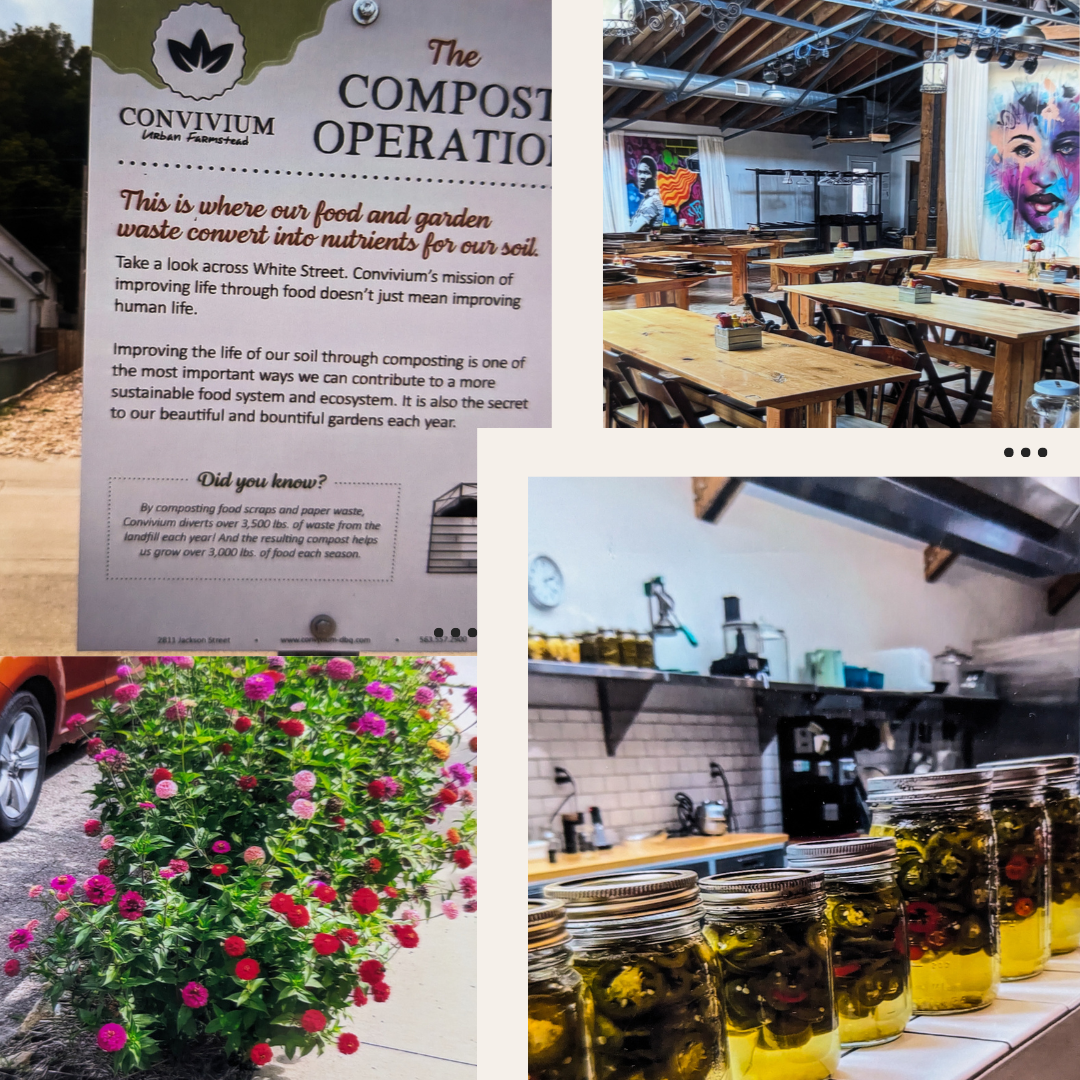Fresh from her exploration of urban food growing trends in the USA, we caught up with the dynamic Kate Fitzgerald—a seasoned environmental trainer, educator, and nursery manager, with the unique twist of being an experienced chef. Kate’s expertise intersects seamlessly in the realms of urban food, urbanism, and biodiversity, all converging to shape liveable communities for the 21st century.
In the following, Kate shares her reflections on the art of managing limited urban spaces, deftly responding to community needs for a healthy ecology, sustainable urban landscapes, urban food cultivation, and the fostering of connected, inclusive communities.
In the past, landscaping mainly involved adding grass, shrubs, flowers, or mulch to enhance your home’s appearance and make maintenance easier. But now, it’s about creating an extended living space that’s friendly for both pets and children – a place to entertain, dine outdoors, and relax. The boundaries between the house and garden have blurred, and landscapes are becoming functional extensions of our living spaces, giving a resort-like feel to our own sanctuaries.
Landscaping trends also follow fashion, adapting to new needs like privacy, shade, low water requirements, and attracting butterflies and birds. A noteworthy example is the introduction of Duranta repens (Sheen’s Gold & Geisha Girl) during the Sydney Olympics. This versatile plant, perfect for hedging and Olympic ring decorations, can be attractive when pruned, but if left unattended, it grows large, loses colour, and has poisonous berries.
However, there’s a responsibility in landscaping too. The industry introduced Lantana camara, which, though aesthetically pleasing, has become invasive, costing the government millions to control and taking over large areas of agricultural land in Australia. As we continue to shape our outdoor spaces, it’s crucial to consider the impact on the environment and choose plants that not only look good but also harmonize with nature.
In the 21st century, we’ve seen a rise in large houses on small lots, high-density housing, and reduced privacy. Landscape design now prioritises functionality for those with time constraints, aiming to create low-maintenance utility spaces around homes. Gardening has shifted from a hobby to a perceived chore. Key built-in elements include level surfaces, dry/shaded areas for entertainment and shelter, and designs that accommodate negotiated paths, walls, gradients, steps, and water-impenetrable surfaces. Modern landscapers are recognised as professionals, with a landscape license now considered essential, marking a departure from previous perceptions of the industry. These trends are driven by both fashion and practicality.
“The lesson here is that by enhancing soil life through composting and food production, we can significantly contribute to a more sustainable food system and ecosystem.”
Kate Fitzgerald, environmental educator
Hold on a moment, what about the environment and biodiversity? Not to mention the impact on the cost of fresh food, soil quality, wildlife, water catchments, erosion control, water retention, and the need for a more sustainable food system and ecosystem. As we approach the 25th year of the 21st century, there’s hope for a paradigm shift in our approach to landscaping. The issue of food security is becoming increasingly critical for the next generation. Global warming is undeniably real, and its effects are evident in various dangerous ways.
Australia, being the oldest and driest continent outside of Antarctica, faces unique challenges with floods, droughts, and bushfires. It’s imperative that we pay special attention to how and where our food comes from. Our soil is aging, water is scarce, and rising salinity poses significant challenges. Despite our diverse soil and climate, the initial European colonizers brought with them an English gardening ideal, neglecting the valuable knowledge of the Indigenous peoples. They introduced plants with high water needs, wasting our precious water resources. Additionally, the introduction of hooved animals disrupted our native ecosystems, leading to soil compaction, erosion, and sediment runoff.
Fortunately, we’ve become more aware and educated about the situation. Addressing these problems not only helps solve environmental issues but also creates new opportunities for sustainable and responsible landscaping practices.
Now, our focus should shift towards ensuring food security and reducing emissions, and a clear solution lies in urbanising and decentralising food production. During a recent visit to the USA, I came across inspiring examples of urban food production, with “Convivium” being particularly impressive. This urban farmstead transformed a vacant greenhouse into a banquet room with a stage for education and entertainment. Harvest tables filled the space, adorned with local art for sale, and an attached industrial kitchen was used for food preparation, preservation, and cooking classes. The casserole program provided nutritious food to the neighbourhood, fostering community among the elderly.
The founders turned the yard into an entirely edible landscape, where everything grown could be eaten or supported a plant with edible parts. The Production Gardens supplied food for the restaurant, catering, cooking classes, and the casserole program, while Common Gardens throughout the neighbourhood offered free vegetables for anyone to pick. This approach not only built community but also established a secure food system.
This urban prototype showcased how food unites and builds community, revitalising a rundown neighbourhood and instilling pride in the residents. The lesson here is that by enhancing soil life through composting and food production, we can significantly contribute to a more sustainable food system and ecosystem. This approach is not only practical but also aesthetically pleasing, bountiful, and community-building.
Imagine a shift where, instead of roses, we cultivate food, compost household waste, harvest water, and make conscious choices about water usage. Growing citrus and fruit trees, herbs, and leafy greens in small spaces like raised beds, pots, vertical gardens, and even window boxes can be a transformative step. Even the streets can be utilised, replacing grassed verges with fruit trees and herbs, creating both a visually appealing and functional urban landscape. However, such transformations require at the very least cooperation from local governments, city planners, and forward-thinking experts, along with well-thought-out plans for maintenance and protection of public land.





